There was zero political correctness involved when I was first told the tales of Roney’s Point.
Legend had it then that this was where the county’s crazy people were locked away, tortured, and then discarded if shock therapy failed to smack them back to reality. It was an insane asylum. That’s what I was told.
Oh yes, and it was haunted. Anyone who dared visit this unmarked and isolated area just off of U.S. Route 40 near Valley Grove in Ohio County would be chased off by the ghosts of deranged souls intent on revenge for the archaic treatments they had suffered. If the dead demons didn’t scare you away, a crazed man with a shotgun would.
So, of course, a creepy cruise to Roney’s Point was a must, a dare, a fraternity prank, and a place to park and party in the deep dark. My initial visit was planned as an expedition of sorts, with flashlights, blankets and baseball bats within reach. But after navigating the brick road and noticing the perfectly lined trees on each side and the burned-out mansion on the way, the adventure turned into a quick-paced and nerved-up drive-through.
I did not return again until I was pledging a fraternity while attending West Liberty State College. The mission this time was a sleepover in the basement of the long, boarded-up facility with no flashlights and no defense. We lasted only a few hours.
Many in the Upper Ohio Valley are aware of the legends of Roney’s Point, but few know the true stories concerning this former facility and the remnants of the Schmulbach Mansion that rests to the right of the roadway leading to the asylum.
Terry Davis: One of the best stories I’ve had that creeped me out when I was younger – I was told the trees are evenly spaced apart because there’s layers of dead bodies in between them from where the patients died. Check them out. They’re pretty close!
Terri Riggle-Helt: My great grandparents are buried there. No headstones. It was called a pauper’s plot. People who had no money or life insurance to pay for a burial were buried there. My mother was very familiar with the place and told me stuff. They also sent people there with TB. I had an aunt there.
Tim Edge: Roney’s Point was required visiting back in the ‘70s. Fall was great because the trees on the way up were bent over the road like a live tunnel, and the sound of the wind blowing through the dying leaves was enough to scare your pants off before you even got to the main house. With broken windows, the leaves would blow into the house, and whenever someone would step on and crunch some leaves, everyone would freak out. A bunch of us were up there once, and we found a bunch of round, paper, printout discs; they looked like they recorded brain waves or something. Just added to the creepiness of the place.
Later that night we heard some sirens from up on the hill. We all took off like a bat out of hell and jumped in the car and cleared out big time. Wasn’t until we got the bottom of the hill that we realized we left one of our friends at the mansion. By the time we got up the nerve to drive back up to get him, he had run almost all the way back down the hill.
Judy Parsons Luzader: When I was a kid I used to go up with my mom to visit and play games with the patients. I always felt sorry for the people. At that time it was called the halfway house.
The Mansion and the Hospital.
The medical facility was constructed and operated by the state of West Virginia. Initially the staff concentrated on the tuberculosis outbreak, and then it was transitioned into a mental health facility. State officials, however, handed over the facility to the Ohio County Commission, and the county soon closed the hospital in 1972 because of the structure’s condition.’
After tuberculosis patients were no longer being treated, drug addicts, alcoholics, and the clinically insane received treatments at the former state hospital, a type of facility that was common in the 1950s and 1960s, according to Ohio County Commissioner Orphy Klempa.
“Those kinds of hospitals used to sprinkle the countrysides all over our country,” he said. “We separated those people from the rest of us. We weren’t very good to some of the people of our past.”
Former Ohio County Sheriff’s Deputy (and currently Ohio County magistrate) Charlie Murphy was frequently dispatched to Roney’s Point between 1978-87, and he has lived his entire life in this area of Ohio County. Many continue to believe the Schmulbach Mansion was used at one time as the sanitarium for tuberculosis patients, but Murphy confirmed that is merely urban myth.
“To the best of my knowledge , and I was born in 1955, the mansion was never used as a hospital,” he said. “The medical facility, first for the tuberculosis patients and then for the mentally ill, was always in the bigger building at the top of the hill.
“Most of the time I was sent to Roney’s Point to chase the parkers out or break up parties,” Murphy recalled. “People didn’t realize how dangerous it was up there because there were a lot of open water wells all over the grounds.”
The Schmulbach Mansion, according to local historian Ryan Stanton, was constructed for several years by brewer Henry Schmulbach, an investor in horse racing who didn’t run in the same circles of most of Wheeling elite citizens.
“Some people believe he was shunned in Wheeling, but I haven’t found that to be true. He wasn’t shunned. He was the one who shunned,” Stanton said. “He did what he wanted to do.”
Schmulbach moved into the mansion in 1913 at the age of 69 and soon married Pauline Bertchy the same year so he would have, Stanton said, “a hostess for the house.” It was also the year when West Virginia’s government enacted prohibition, forcing the closure of the brewery in South Wheeling.
“Her family was in the funeral home business, so they were pretty prominent in the Wheeling area, too,” Stanton said. “But then Schmulbach died in 1915, and she admitted she hated living all alone out there. That’s when she sold it to the county.
“After the county took ownership, it was opened as Ohio County’s poor farm. If you needed work, that’s where you went,” he said. “The mansion is where some of the workers used to stay so they could keep working. There are records that show some of the men lived there for as long as three years working that farm.”
Stanton also explained that, at one time, Schmulbach’s property featured a carriage house, a dairy barn, a greenhouse, a water fountain, and an ice house, as well as 11 other structures.
“In an article I found from 1972, it states those structures were used by the Valley Grove and Triadelphia volunteer fire departments for training,” Stanton said. “They burned them down.”
It was an accidental fire in 1975 that reduced the Schmulbach Mansion to the shell it is today.
“It destroyed the house, and I believe it was still in good enough condition where it could have been saved,” Stanton said. “After the hospital closed and the county took control, a lot of kids started going up there, and that’s most likely how the fire got started.
“I know there are a lot of rumors about the property, including the mansion and the asylum building, but the two structures are really about very different times in the history of Ohio County,” he continued. “But I do find it ironic that Ohio County now is making money from Henry Schmulbach from the oil and gas industries.”
The Man with the Shotgun.
His name was Cecil Tominack, a local coal miner whose family resided in the former nurses’ quarters near the hospital. Soon after Cecil was laid off from a local coal mine in 1986, his father, John Tominack, then a county commissioner, hired him to maintain and supervise the grounds. Cecil received zero compensation, but the Tominack family was permitted to move into the former nurses’ house.
So Cecil and his wife, Donna Lou, moved their three children (Jeremy, Olivia, and Lindsey) to Roney’s Point.
“The road going up the hill was a yellow-brick road, so that’s what my dad used to make us look forward to living there,” explained Cecil’s middle child, Olivia Litman. “And the house was a really nice place once my parents fixed it up. We had six bedrooms and five bathrooms all on one level.
“Because it’s where the nurses used to live, there were numbers on the door. No. 4 was where my mother did her sewing, No. 7 was our guest room, and No. 6 was the one Santa visited,” she recalled. “It was a great house, but then there was always that view out of our window of the old asylum, and that was always creepy to me.”
So creepy that Olivia slept with a large, white stick.
“The whole place was like a scary movie, so I had that stick with me until I hit my father so hard with it, he took it away, and he burned it,” she said. “He was coming into my bedroom to be the tooth fairy, and I whacked him really, really hard.
“It didn’t matter that my parents always told us that the ghosts up there were friendly ghosts because we were there taking care of their home,” Olivia continued. “There was always some kind of sounds coming from the asylum that sounded like slamming doors. Now I realize it was probably the ceiling collapsing, but when I was a kid, it sounded like unhappy ghosts.”
Olivia and her brother and sister did enter the former hospital, and her parents staged Halloween parties inside. She said when the county closed the facility, a plethora of supplies were left behind.
“I remember seeing a bloody handprint in the operating room, and there were straightjackets lying around everywhere,” she said. “And the basement was filled with nothing but cages and colored rooms. There was a blue room that I was told was used to calm down the patients. There was a red room that was supposed to help patients feel some kind of emotion.
“There was another room that had nothing but restraints in it, and one entire wall was lined with cages with steel bars and locks on them,” Olivia said. “It looked like a prison.”
By the time Olivia was in ninth grade at Wheeling Park High School, she realized her fellow students were telling tales about her father and his methods of clearing the grounds of trespassers. Cecil, at times, would fire a warning shot from his shotgun to scatter the high school and college kids. What she heard from her classmates was that if one dared to venture to Roney’s Point, a crazed man would find you and shoot you.
But that was because a homicide took place near the Schmulbach Mansion in the late 1970s.
“Soon after I became a deputy, I responded to the scene where a man had shot and killed another man with a shotgun,” Murphy reported. “The shooter found his daughter in the car with this man, and apparently he didn’t like that very much. He shot the man in the left shoulder area, and then put the gun to his temple and pulled the trigger. And he was tried and convicted for that murder.”
“My dad was one of the nicest people you would ever meet. He wasn’t some crazed killer,” Olivia said. “It was really an odd feeling sitting in the classroom listening to all these horror stories because I knew he wasn’t doing anything they were saying. He shot his shotgun, but there were also times when there were more than 100 kids up there.
“I remember one time when there was a big homecoming party up there,” she added. “He went to back of our house and fired a shot that chased them out of there.”
The Tominacks lived in that house until the summer of 1993, when her parents were finished constructing a log cabin. Olivia has returned to the ground only once since.
“I had some friends who wanted to take a ghost tour up there, so I got us the permission to go up,” she said. “We walked around it, and the others were pretty scared. But I wasn’t. I just kept pointing out where me and my brother and sister used to play.”
The Grounds Today.
I visited Roney’s Point during the early afternoon this past Thursday with fellow Weelunker Jason Koegler, and the property was different in some areas from what I recall. After turning left onto Roney’s Point Run Road, the next turn was farther than I remember. I even told Jason we may have to turn back.
But then we saw it. County Farm Road.
Gone is the yellow-brick road as well as most of the aligned trees that once lined the roadway. On the way to the hilltop a new road has been cut by Chesapeake Energy for fracking per the agreement signed by the Ohio County Commission. The commission signed the deal in 2010 for the county farm’s 490 acres.
We could see hundreds of trees that have been stapled with “Private Property” and “No Trespassing” signs, and the only reason we could notice the mansion’s shell was that the far-below-freezing temperatures that have gripped the region this fall season had decimated much of the overgrown foliage. The old house was littered with graffiti, beer bottles, broken glass, and bricks. Blocks and boards taken down by time and the elements were scattered on every floor.
The hospital grounds are maintained today, according to Klempa, by West Virginia Trooper Jimmy Dean, and we saw his cruiser once reaching the hilltop. The grass was cut. but the former asylum is now hidden behind bushes that are obviously taller than they were initially intended to be.
Every entrance to the hospital is now boarded with screws driven into the building so tightly it was impossible to get even a fingertip behind any of the boards to test their integrity. Most of the structure’s windows are now broken, but they are too high for easy entry. There is no longer a way to see inside the building, let alone to enter it..
There is a small neighborhood of 10 or so houses behind the facility and then nothing but the woods beyond.
“From what I understand, it’s calmed down up there quite a bit,” Klempa said. “And as far as I know, the folks who live up there haven’t reported anything about ghosts or anything like that.”
Still, Olivia Litman insisted that during her seven years living nearby, the unusual became, well, the usual.
“There was a light inside the asylum that would come on from time to time,” she said. “You could see it plain as day from the back of the building, but it didn’t stay on. One night it would be on, and the next it would be dark – and no one was in the building. My dad made sure of that.
“And one day I was sick and laying down in my parents’ bed, and my brother and sister started yelling to go to the living room. When I got in there, I saw a man dressed in all grey, like work clothes of some sort, and his face was grey, and his eye were kind of see-through.
“This man even bent down and petted our dog, Bowser,” she continued. “But when my brother ran outside to find out who he was, the man was gone. He vanished, and at that time the land was clear, so there’s no way he could have disappeared the way he did.”
There are no plans in place at this time, according to Klempa, to demolish the former hospital or what remains of the Schmulbach Mansion. Most of the 490 acres are covered with trees, and wild animals indigenous to the area include bobcats, coyotes, deer, raccoons, squirrels, rabbits, chipmunks, fox and skunks. The county commission allows some county residents to hunt on the property, but the “someday” dreams are focused on development.
“It’s now a piece of property the county owns that I would like to see be developed in the future,” Klempa said. “I believe that could be a location of some residential development or something in the area of light industry.
“At this point, the buildings on that property do not pose a threat to anyone unless they break the law, so why spend the dollars when there are a lot of more important things we can do? It’s not high on the priority list,” Klempa added. “ Now that would change if someone approached us about development.”
As we were leaving, Jason and I stopped at the bottom of County Farm Road for one more glance back into our memories. I had not been there since returning in 2004 after we moved home from Pittsburgh, and it marked Jason’s first time since he and two friends listened to the Pittsburgh Pirates capture the 1991 National League East Division title in early October.
This time was different for both of us, though, because I think we each hoped silently to be spooked by something, anything, but the light was off, we heard not a single gunshot, and the grey man was nowhere to be seen.
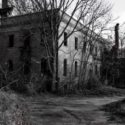
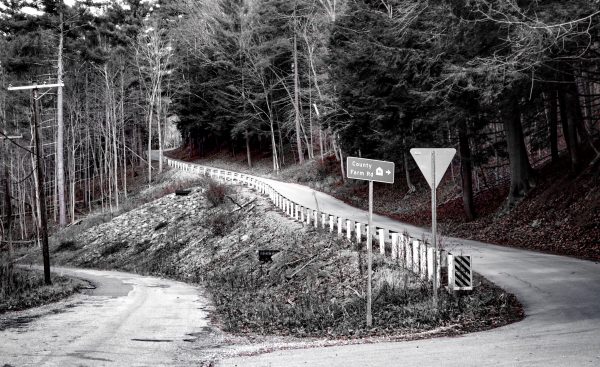
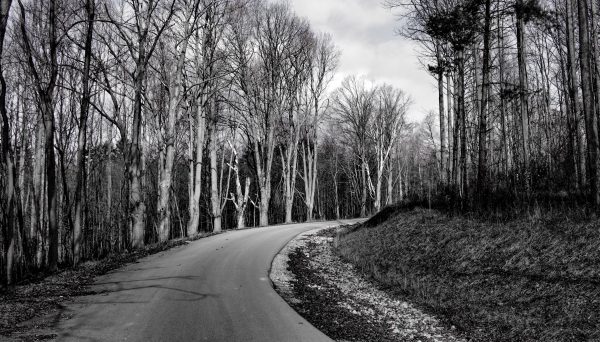
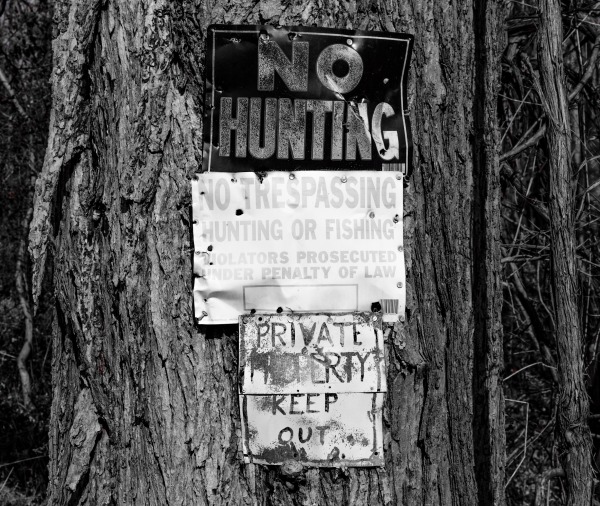
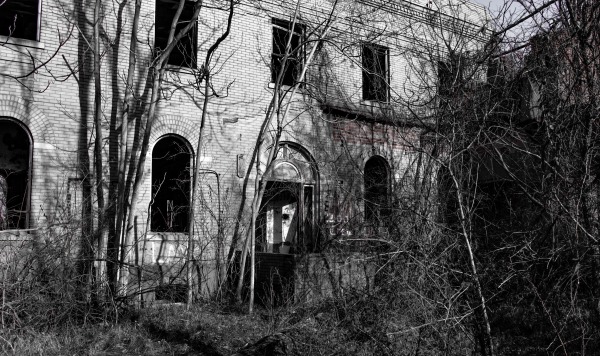
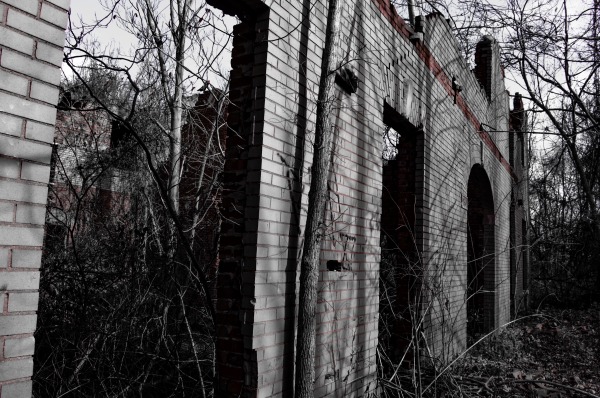
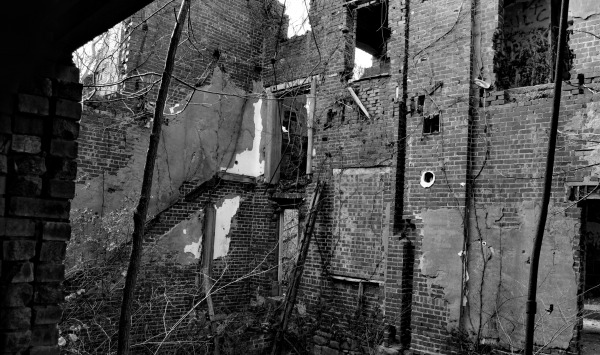
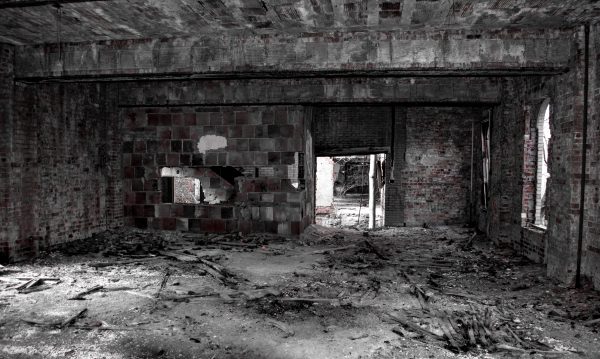
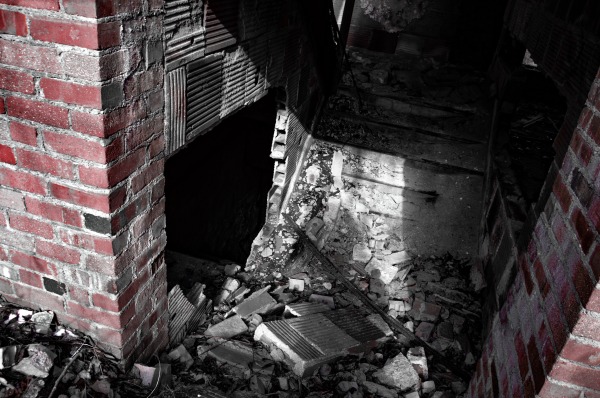
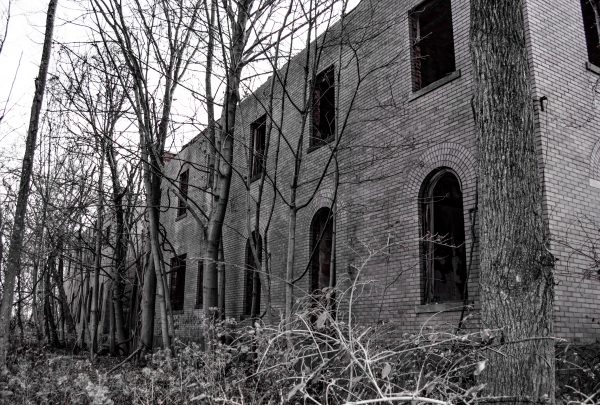
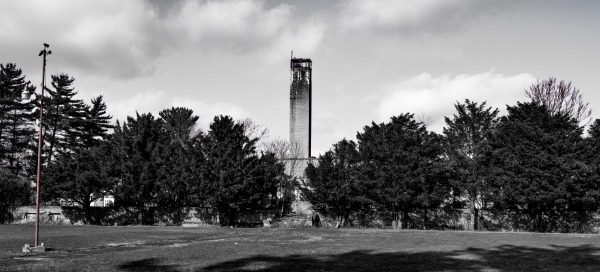
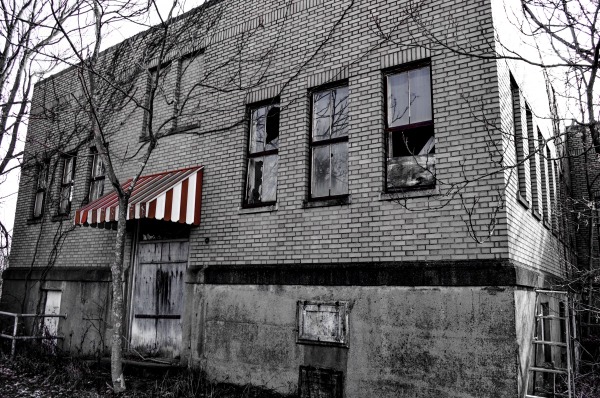
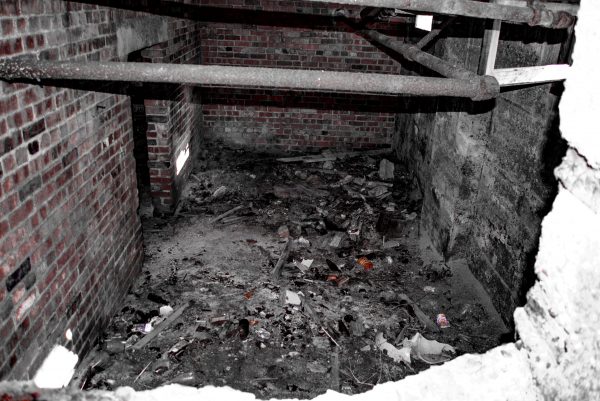
Leave a Reply
You must be logged in to post a comment.